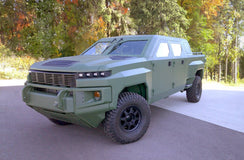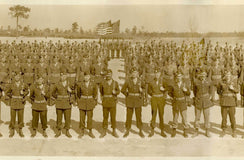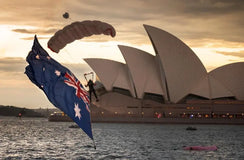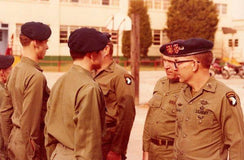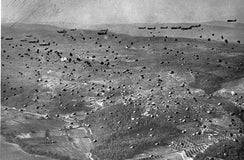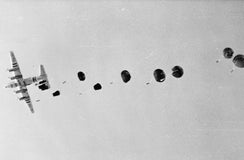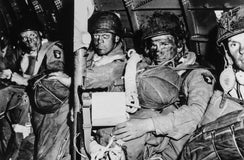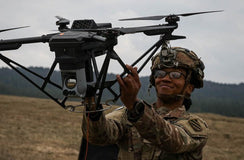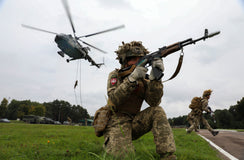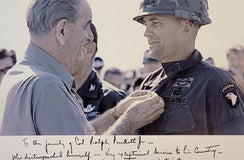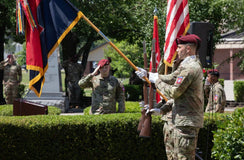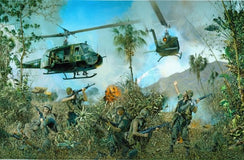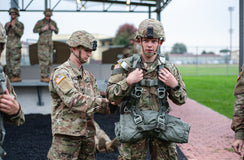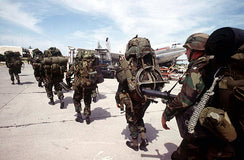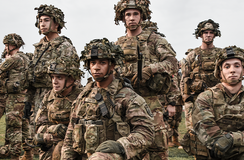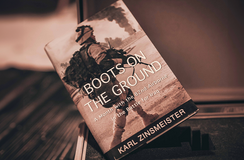160th Special Operations Aviation Regiment - The Night Stalkers
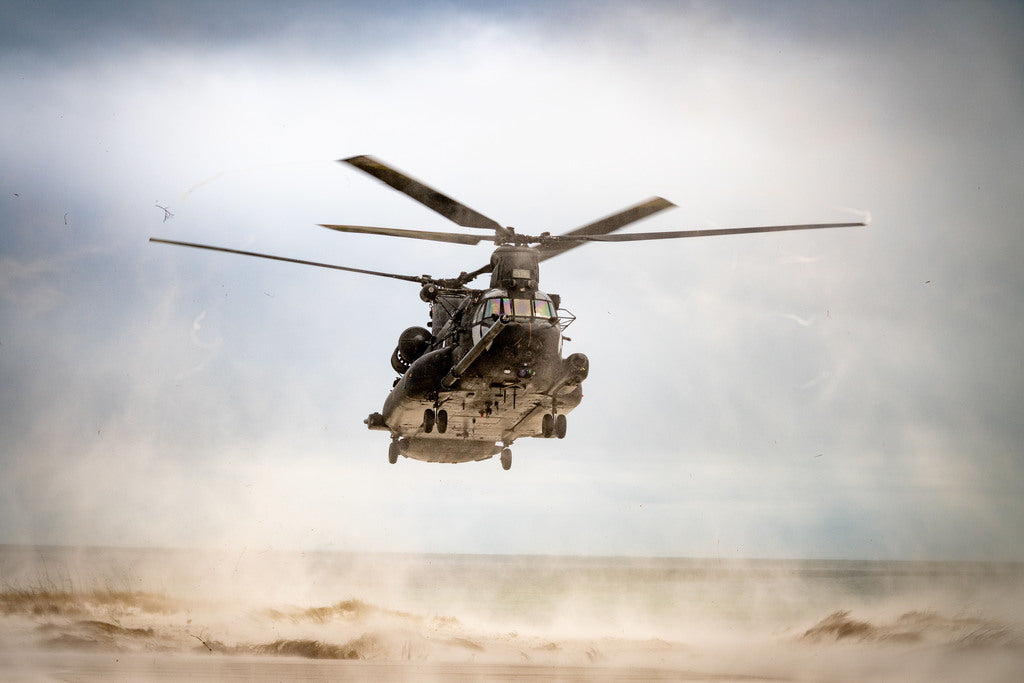
They were born out of a doomed operation, but their role has become irreplaceable. Their brothers in arms count on them in the most difficult of times while they remain the enemy’s worst nightmare. Battle-proven, always resilient, and lethal, they are highly respected among all the services and have often made America proud. Ladies and gentlemen, let us introduce you to The Night Stalkers.
Tragedy Turns into a Lesson
In 1979, Iranian students stormed the United States Embassy in Tehran, thus leading to one of the most significant diplomatic and security crises in America. Six months later, on April 24th, 1980, the United States initiated one of the most famous yet unsuccessful operations in modern warfare. This was done after months of preparation, coordination, and surveillance in enemy territory. Operation Eagle Claw involved America's most elite units, but they had little or no experience fighting together as one team.
The operation included the Marines who provided the pilots for the eight RH-53 Sea Stallion helicopters provided by the Navy from the aircraft carrier USS Nimitz. Of course, the operation also included fixed-winged aircraft from the U.S. Air Force (Hercules and Combat Talons). Unsurprisingly, the core of the operators came from the U.S. Army's Delta Force, Special Forces, and Rangers and were in charge of rescuing the American hostages.
The attempted rescue had an unfortunate start, with one RH-53 returning to ship due to bad weather and mechanical issues, while two more were abandoned. This led to the mission abort due to the need for six fixed-winged aircraft to be able to carry the blue force. As the teams were regrouping to attempt the operation again, tragedy struck. A collision between an EC-130E and a helicopter tragically took the lives of 5 Marines and three airmen. The material losses from this incident were eight aircraft and many other defense equipment.
After a thorough review of the operation, a panel of officers made recommendations that eventually led to the creation of the U.S. Special Operations Command (SOCOM) and the Joint Special Operations Command (JSOC). There was also a particular unit in the Army, the 160th Special Operations Aviation Regiment, a.k.a. the "Night Stalkers.".
From a Small Task Force to the Best Aviation Regiment in the World
160th SOAR's nucleus was derived from the personnel of the 101st Airborne Division, initially named Task Force 160. In October 1981, it was officially assigned as the 160th Aviation Battalion at Fort Campbell, KY, while its first combat engagement was in 1983 in Operation Urgent Fury in Granada. It became an airborne unit three years later and was reassigned to the 160th Special Operations Aviation Group. The unit continued to grow, learn, and develop, thus becoming a pioneer in nighttime flying techniques, and quickly became the go-to unit for special operations necessities worldwide.
In June 1990, the Special Operation Aviation Regiment (Airborne) was activated with three initial battalions, each containing specialized companies. The professionalism and lethality of the "Night Stalkers" turned them into a high-demand product within the SOF community and beyond. Their ability to strike at night or any time of the day the operation requires them to make them stand out. The consistent use and calls for support from the other units led to the addition of a fourth battalion in 2006. They continue to serve America and its partners in the most challenging ops and the most dangerous combat environments.

160th SOAR during a flight./U.S. Army
The Organization
Each battle-hardened Battalion is strategically equipped with a formidable array of light, medium, and heavy helicopters, meticulously customized to align with the unit's distinctive mission requirements precisely. The 1st Battalion commands a squadron comprising an AH-6 Little Bird helicopter company, an MH-6 Little Bird helicopter company, and the might of two companies piloting MH-60 Black Hawk helicopters. Meanwhile, the 2nd Battalion orchestrates the skies with two MH-47 Chinook helicopter companies.
The AIRBORNE prowess doesn't end there. The 3rd and 4th Battalions stand unwavering, boasting two MH-47 Chinook helicopter companies each, coupled with the additional might of an MH-60 Black Hawk helicopter company. This strategic composition ensures a versatile and powerful aerial force for every mission.
In addition to the impressive airborne fleet, each Battalion is fortified by the steadfast presence of a Headquarters and Headquarters Company, a command hub where deliberate decisions are forged, and a maintenance company, ensuring that every helicopter remains at its peak performance, ready to soar into the heart of any mission with unwavering precision and power. The war-fighting battalions are not just armed; they are a meticulously crafted force, ready to dominate the skies and fulfill their unique roles with unparalleled efficacy.

160th SOAR trains in the SOCSOUTH AOR/Daisy Bueno
Making the Cut to Become a SOAR Member
The 160th Special Operations Aviation Regiment (SOAR) actively scouts and evaluates the most highly skilled aviators, crew members, and support personnel within the Army. Individuals chosen for this elite unit embody the spirit of triple volunteering: for service in the Army, airborne training, and commitment to the regiment. Once selected, commissioned officers, warrant officers, and enlisted Soldiers undergo specialized training in their respective Basic Mission Qualification courses, commonly known as Green Platoon, under the guidance of the Special Operations Aviation Training Battalion.
In the crucible of the "train as you fight" ethos, the professionalism and capabilities of Army Special Operations aviation are honed to perfection. This relentless training doesn't cease upon entry into the line units but persists unwaveringly.
The regiment is a bastion of unparalleled resources, facilitating extensive and realistic training exercises conducted regularly across diverse environments. This robust and authentic training regimen forms the unit's combat readiness bedrock, ensuring that every member is prepared to face any challenge with unparalleled skill and precision. The 160th SOAR is a force forged in the crucible of dedication, training, and unyielding commitment to excellence.
Did you know?!
The famous motto of the 8th Special Operations Squadron, “With the guts to try,” is closely linked to “Operation Eagle Claw”. After the unsuccessful attempt of the rescue operation in Iran, two British Airmen paid a quiet visit to comfort their American counterparts. Delivering two cases of beer, they handwrote a message in the case that would become iconic and further strengthen the bonds between the two armed forces. “To you all, from us all, for having the guts to try” was a message showing admiration and respect. This act was a friendly reminder that many other forces and nations wouldn’t even dare to consider conducting such a gutsy operation. But America did, and it didn’t go unrecognized, forever earning the respect of many!
Check out this video about this story:
Banner Photo: Jeff Slinker/U.S. Army

